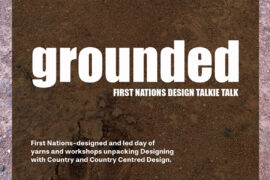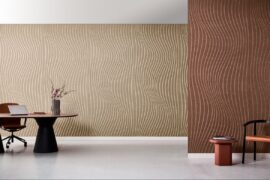Jefa Greenaway, founder of Greenaway Architects, discusses the changes to the workplace that the lockdown has caused, including some of the positives.

April 30th, 2020
“We transitioned quite early, having sent staff home to operate remotely about four weeks ago,” says Jefa Greenaway, lecturer, designer, architect and founder of Greenaway Architects.
“The advantage of having a trained virologist within our broader team,” he notes
“We in essence activated a business continuity plans which we had been discussing internally for some time knowing the likely trajectory of what was coming. With a number of interstate projects, we were already quite familiar with video conferencing which has naturally become the new normal. I find that we are indeed checking in more frequently to maintain productivity levels, keep everyone busy and knowing what is needed to be done and to ensure staff wellbeing and connectivity is maintained.”
As to how he is finding the new work paradigm, Greenaway says, “The early years of our practice, more than two decades ago now, we spent a number of years operating in a home office setup. These new arrangements are like going back to our roots and going back to basics but with an understanding of way one needs to work when disconnected from a more formal office situation.”
“We brought home and distributed computers to staff, so we are all readily setup to continue working. The biggest challenge is juggling kids at home, the distractions of the coffee machine/fridge which requires a more determined focus.”
“Along with clear goal setting and discipline we continue to meet the new ways of work. I’m finding the need to speak to friends and colleagues more often, beyond Zoom, using the old school phone as an important link beyond home,” Greenaway says.
In terms of what are some positive results of this lockdown working arrangement, Greenaway points out that, “The biggest positive is the unifying effect of the team coming together, checking in on each other and the understanding that we’re all in this together. In addition, the value of humour and the lighter moments of 30 people dialling in each with their own backdrops showcasing people’s personalities.”
“I feel out of this global catastrophe that we may see a reset, an understanding that together we’re stronger and that the simple things in life – health, family, food and resilience are really important. I wouldn’t be surprised if many seek more flexible work arrangement when we get to the other side, as the industry recalibrates to a post-Covid19 environment,” he says.
INDESIGN is on instagram
Follow @indesignlive
A searchable and comprehensive guide for specifying leading products and their suppliers
Keep up to date with the latest and greatest from our industry BFF's!
The new range features slabs with warm, earthy palettes that lend a sense of organic luxury to every space.

For Aidan Mawhinney, the secret ingredient to Living Edge’s success “comes down to people, product and place.” As the brand celebrates a significant 25-year milestone, it’s that commitment to authentic, sustainable design – and the people behind it all – that continues to anchor its legacy.

London-based design duo Raw Edges have joined forces with Established & Sons and Tongue & Groove to introduce Wall to Wall – a hand-stained, “living collection” that transforms parquet flooring into a canvas of colour, pattern, and possibility.

In putting together Indesign #83, our Workplace Progress issue, we spoke with Helen Kontouris to get her thoughts on the longer term impacts of COVID-19.

In the final interview in the life after lockdown series, Branko Miletec talks to Anastasia Narkiewicz about the changing work environment in the post COVID-19 world
The internet never sleeps! Here's the stuff you might have missed

Several design groups are coming together on 29th October, 2025 for ‘grounded,’ a day of talks and workshops on Country-centred design.

In contemporary interiors, ensuring a sense of comfort and wellbeing means designing and specifying finishes and products that support all the senses.